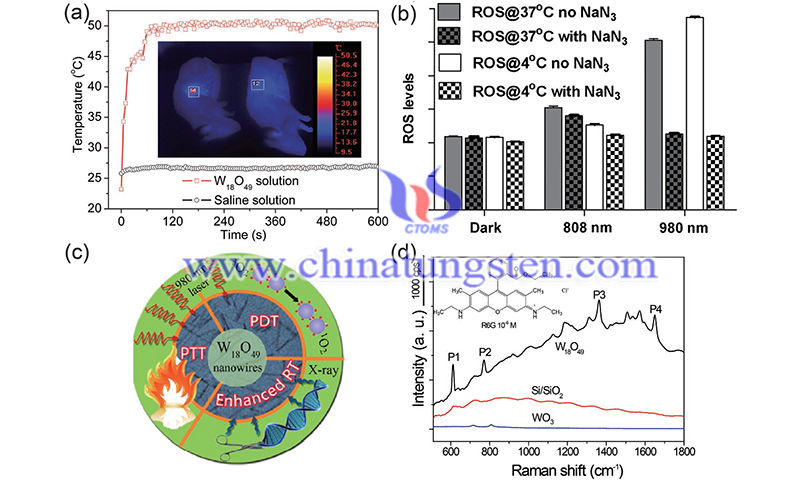Applications of Tungsten Oxide and Its Derivatives
- Details
- Category: Tungsten's News
- Published on Thursday, 15 December 2022 10:38
Tungsten oxide (WO3) and its derivatives hold various applications in different fields. WO3 also known as tungsten trioxide or tungstic anhydride, is a chemical compound containing oxygen and the transition metal tungsten. It is obtained as an intermediate in the recovery of tungsten from minerals.
To prepare tungsten, tungsten ore is treated with various alkaline substances and other raw material contents to produce anhydrous WO3 by various processes. this tungsten trioxide is further reduced with carbon and hydrogen to obtain pure tungsten metal. WO3 is an intrinsic n-type bulk semiconductor; stoichiometric behavior occurs due to the excess of metal, which creates oxygen vacancies.

(Credit: Shan Cong et al./AdvancedMaterials)
In the case of n-type metal oxides, electrons pass through the conduction band (forming a band gap) from the ionized donor, and the charge carrier density at the interface is thus reduced and a potential barrier to charge transport is formed to reduce the band gap energy for various applications. Tungsten (VI) oxide occurs naturally in the form of hydrates and includes the following list of tungsten minerals: tungstenite WO3-H2O, wheatite WO3-2H2O and hydrotungstenite (H2WO4).
Regarding WO3, Abraham Wolcott et al. report the synthesis of ultrathin WO3 nanodiscs using a wet chemical route using polyethylene glycol (PEG) as a surface conditioning agent. The nanodisk structure they report is based on the interaction of a nonionic 10,000 g/mol PEG molecule with a tungsten oxygen anion precursor.
The large planar area and high aspect ratio of WO3 nanodiscs are potentially useful in PEC cells. The formation of nanodiscs was reported to be critically influenced by the interaction between PEG and WO3.2H2O precursors, which in turn formed spherical nanoparticles, using PEG-10000 as a surface conditioner that preferentially adsorbs on the (010) crystal plane, thereby inhibiting crystal growth, in contrast to other studies.

(Credit: Shan Cong et al./AdvancedMaterials)
Taylor et al. by sol-gel method on indium tin oxide (ITO)-coated sodium silicate synthesized half-micron-thick tungsten oxide films on substrates, and their study showed that electrochromic windows with good properties could be made by laser firing of sol-gel-derived WO3 films. Guan Wang et al. successfully demonstrated the fabrication and characterization of WO3 nanofibers using electrospinning techniques and sol-gel chemistry.
Researchers concluded that electrospun WO3 nanofibers have potential applications as sensor materials for gas detection. Ultrafine tungsten and WO3 powders with controlled particle size and structure were synthesized by a reverse microemulsion-mediated synthesis method, illustrating their interesting applications in different fields such as catalysis, electronics, lighting, and gas sensors.
Reference: V Hariharan, B Gnanavel, R Sathiyapriya, V Aroulmoji. A Review on Tungsten Oxide (WO3) and their Derivatives for Sensor Applications. International journal of advanced Science and Engineering, Mahendra Publications, 2019, 5, pp.1163 - 1168. ff10.29294/ijase.5.4.2019.1163-1168ff. ffhal-03093589
- Tungsten Manufacturer & Supplier, Chinatungsten Online: www.chinatungsten.com
- Tungsten News & Prices of China Tungsten Industry Association: www.ctia.com.cn
- Molybdenum News & Price: news.molybdenum.com.cn
- Tel.: 86 592 5129696; Fax: 86 592 5129797; Email: sales@chinatungsten.com



 sales@chinatungsten.com
sales@chinatungsten.com